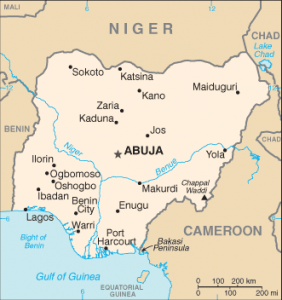Just about a week after battling back the Ebola Virus Disease (EVD) outbreak in a yeoman’s fashion, Nigeria’s Oyo State is now in a battle with another viral hemorrhagic fever, Lassa fever, according to a 360nobs.com report today.

Oyo State commissioner of health, Dr. Muyiwa Gbadegesin said in an announcement that as many as 10 cases had been reported.
“We are already working to bring it under control. We are doing the best to curtail it. We have what it takes to manage it very well. I only want to appeal to our people to be very hygienic, and when they feel that something is wrong with our system, we should go to the hospital for proper diagnosis of their sickness and treatment,” Gbadegesin said.
Lassa fever virus is endemic in Nigeria and is a serious problem in about 2/3’s of the states of that country.
According to the US Centers for Disease Control and Prevention (CDC), Lassa fever is an acute viral illness that occurs in West Africa. The virus, a member of the virus family Arenaviridae, is a single-stranded RNA virus and is zoonotic, or animal-borne.
Lassa fever is a significant cause of morbidity and mortality. While Lassa fever is mild or has no observable symptoms in about 80% of people infectedwith the virus, the remaining 20% have a severe multisystem disease.
The animal host of Lassa virus is a rodent known as the “multimammate rat” of the genus Mastomys. Humans get infected with Lassa through aerosol or direct contact with excreta from the rodent. Laboratory infections do occur primarily through contaminated needles.
The symptoms of Lassa fever typically occur 1-3 weeks after the patient comes into contact with the virus. These include fever, retrosternal pain (pain behind the chest wall), sore throat, back pain, cough, abdominal pain, vomiting, diarrhea, conjunctivitis, facial swelling, proteinuria (protein in the urine), and mucosal bleeding. Neurological problems have also been described, including hearing loss, tremors, and encephalitis.
The Lassa virus and was 1st described in 1969 in the town of Lassa, in Borno State, Nigeria.


12 thoughts on “Nigeria’s Oyo State reports Lassa fever outbreak, a week after country being declared Ebola-free”